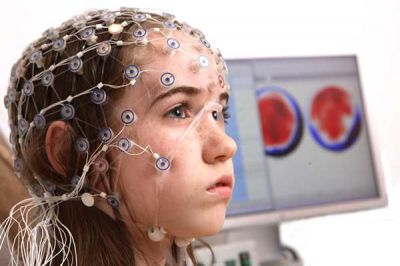
 How to make Music with the Mind
How to make Music with the Mind
Other | Monday 24th November 2014 | edhowe
‘We have drastically reshaped what the creative process is capable of.’ Suby Raman, the MiND Ensemble.
Since the brain-computer interface development company Emotiv has announced the release of the EPOC+ Headset available for shipping this month, we decided to take a look at the possibilities of connectivity between the brain and computer. The Australian company is one of the leading developers in brain-computer interfaces using electroencephalography technology (EEG).
Researchers have been using EEG technology on patients with lack of muscle control and paralysis. The technology would allow them to control things and execute day-to-day tasks using their mind. Although the main use of EEG technology has been medical, Emotiv has explored the possibilities of EEG for gaming and music with their EPOC headset.
Here are some notable examples of the brain scanning headphone sets:
DJ Fresh - Mindtunes Project
This was taken a step further when Emotiv’s original EPOC headset was famously used in the Mindtunes project by DJ Fresh, somewhat ironically sponsored by vodka giant Smirnoff. The project involved DJ Fresh collaborating with three physically disabled music fans. Using the headsets, the three music fans were able to create music using only their minds.
Lisa Park- ‘Eunoia’
Lisa Park also used an EEG headset to record her brain waves for piece called 'Eunoia', which is Greek for 'beautiful thought’. For this project her brain-waves were converted into digital audio signals on her computer, which were sent to 5 different speakers connected to water trays. The speakers were assigned to different emotions: anger, sadness, happiness, hate, and desire.
The MiND Ensemble
The MiND ensemble (Music in Neural Dimensions) is a new-media performance group that utilizes EEG interfaces such as Emotiv’s EPOC to explore the mind-machine-music connection. The 10-minute documentary 'Inside the MiND Ensemble' provides an insight into their process. Suby Raman explains, ‘we have drastically reshaped what the creative process is capable of. We are not limited by years of training prior to mastering an instrument. We are not limited by the abiltity to move a muscle. All we are limited by is the ability to think.'
How it works
EEG is the recording of electrical activity across the scalp, measuring voltage fluctuations resulting from the ionic current flowing within the neurons of the brain. Companies such as Emotiv, OpenBCI, and NeuroSky have developed EEG headsets, which convert raw analogue electrical brain waves into digital signals using complex algorithms. Once brain waves are converted into digital signals/ data there are many possibilities for computer-brain interaction. Take Emotiv’s EPOC, mostly centred around the scalp, the headset incorporates 14 extensions (7 pairs) of electrodes so the user has free movement. The head set is motion sensitive with a gyroscope.
Although EEG technology is not standardised sufficiently enough for medical use, it is used widely for brain research. Surprising, the price of the average EEG head set is not as expensive as you might think with Emotiv’s EPOC original headset costing just $399 and the EPOC+ upgrade costing $499. With the brain controlling everything we do, this is the closest we have ever come to mind-computer connectivity. Although there is much to be improved with the technology, the prospect of being a step closer to total mind-music control is groundbreaking.
